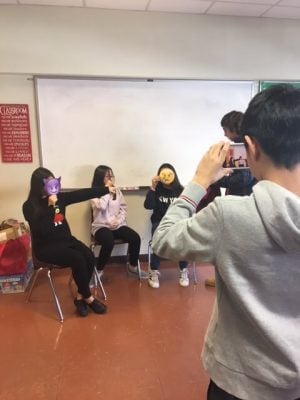

Why should essay writing be the majority of student writing in school? There are lots of other options. Here are three good alternatives to consider.
What are your most memorable experiences throughout your middle school and high school career?
I know, you are thinking about all the exciting and engaging essays you wrote. That five-paragraph essay where you explained the theme of a text. Each paragraph was informative and persuasive, providing robust evidence and analysis to support your claim.
Probably not.
And what about in your classroom today, how often are students writing essays similar to your youth?
Words do not exist only on a page in a two-dimensional space any longer. Today, words are multisensory experiences that are seen, heard, and experienced through podcasting, filmmaking, storytelling, gaming, and virtual reality. Writing has evolved in genre, medium, and dimensions.
Teachers have been called upon to empower learners and to bring creativity into educational spaces to promote critical thinking, problem-solving, and design thinking while at the same time bolster communication skills. Writing is a key communication skill necessary in school and out to articulate thinking and clarify ideas. In the classroom, students write to learn and also write to showcase their learning.
Why relegate essay writing as the majority of student writing in school? We can give lots of other options.
 Podcasts are an effective medium to share knowledge and experiences, and students can easily create their own. Podcasting with students improves literacy skills and creates an authentic audience for writing. When podcasting, students are not just reading aloud their writing but purposefully and carefully choosing their words, narration, and dialogue to communicate their ideas.
Podcasts are an effective medium to share knowledge and experiences, and students can easily create their own. Podcasting with students improves literacy skills and creates an authentic audience for writing. When podcasting, students are not just reading aloud their writing but purposefully and carefully choosing their words, narration, and dialogue to communicate their ideas.
After listening to Sean Carroll’s podcast “What Would Stephen Hawking Do” on Story Collider, I thought why not switch the theme to “What Would Our Founding Fathers Do?” regarding current political issues of contention. For example, a group of students research, write and podcast what Abraham Lincoln would do about gun laws, while another group addresses how Alexander Hamilton would handle the illegal immigration debate.
There are many different styles of podcasts. How you want students to present their podcasts is a decision that you and your students have to make. By offering students choices there will be a diversity of products, students will have agency, and their voices will be at the forefront of their finished products.
More resources:
 Writing a script for a film has its own specific format and requirements. Like writing any good story, when creating a movie, students need a beginning, middle, and end. Most importantly the story needs conflict to drive it. Students have to create authentic characters that viewers will empathize with.
Writing a script for a film has its own specific format and requirements. Like writing any good story, when creating a movie, students need a beginning, middle, and end. Most importantly the story needs conflict to drive it. Students have to create authentic characters that viewers will empathize with.
Have students write their own fictional stories then storyboard their ideas to convey the plot, conflict, and characterization before going into movie-making mode. When students are creating films, writing their own scripts, and making choices about lighting, sound, and editing, they are demonstrating critical analysis, creative collaboration, and multimedia communication skills.
Documentary films are another format. Check out the Op-Docs series on The New York Times. This series highlights short documentary films about aspects of life that are often hidden or unspoken like incarceration, living with a disability, and facing obstacles. These documentaries highlight real people and true events. Creating documentaries allows students to research and investigate topics relevant to their own lives, make insightful arguments, and illuminate different perspectives.
More resources:
Why just box students into writing one genre per unit? If teachers allow students to show their understanding and knowledge of a topic with a variety of types of writing, there is an opportunity for choice and creativity. This goes beyond just allowing students to choose one genre or format. What if students could blend genres across one writing assignment to produce a multigenre piece that includes poetry, narrative, images, and songs to reveal information about their topic? In a multigenre project, each piece might work independently to make a point, but together they create a symphony of perspectives and depth on a subject. Check out this student example!
The writing your students create for their multigenre project can be powerful and inspiring. With the help of digital tools like Adobe Spark or Book Creator students can amplify their projects for digital storytelling.
More resources:
Writing is a vehicle for communication. Today our students are bloggers, filmmakers, gamers, authors, innovators, and influencers. How amazing would it be to sharpen their strengths and abilities in our classrooms to create something that surpasses the traditional school essay?
For notifications of new Ditch That Textbook content and helpful links:
Interested in having Matt present at your event or school? Contact him by e-mail!
Matt is scheduled to present at the following upcoming events:
[getnoticed-event-table scope=”upcoming” max=”15″ expanding=”false”]

Session expired
Please log in again. The login page will open in a new tab. After logging in you can close it and return to this page.